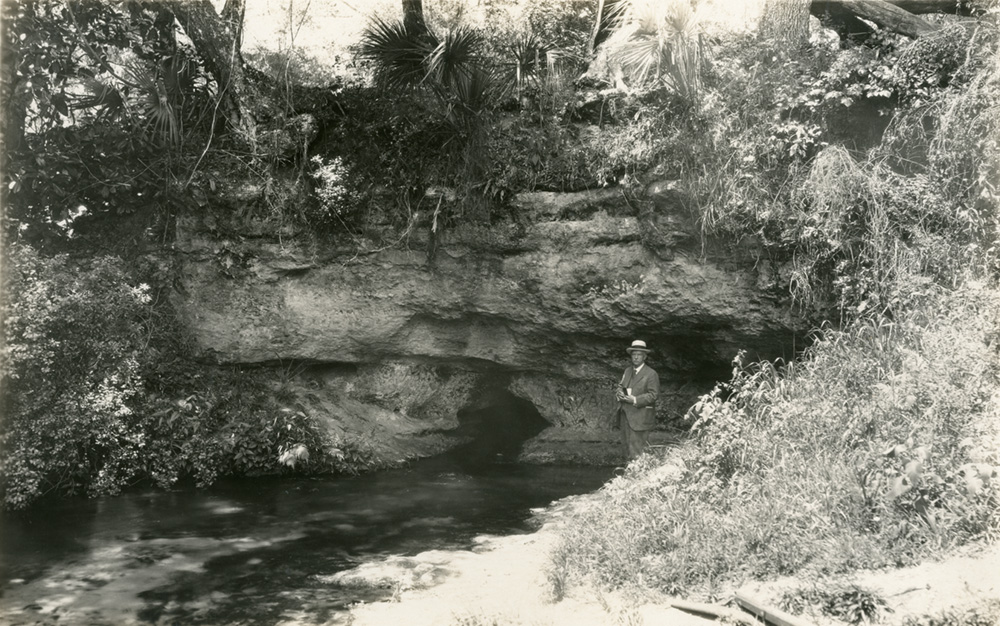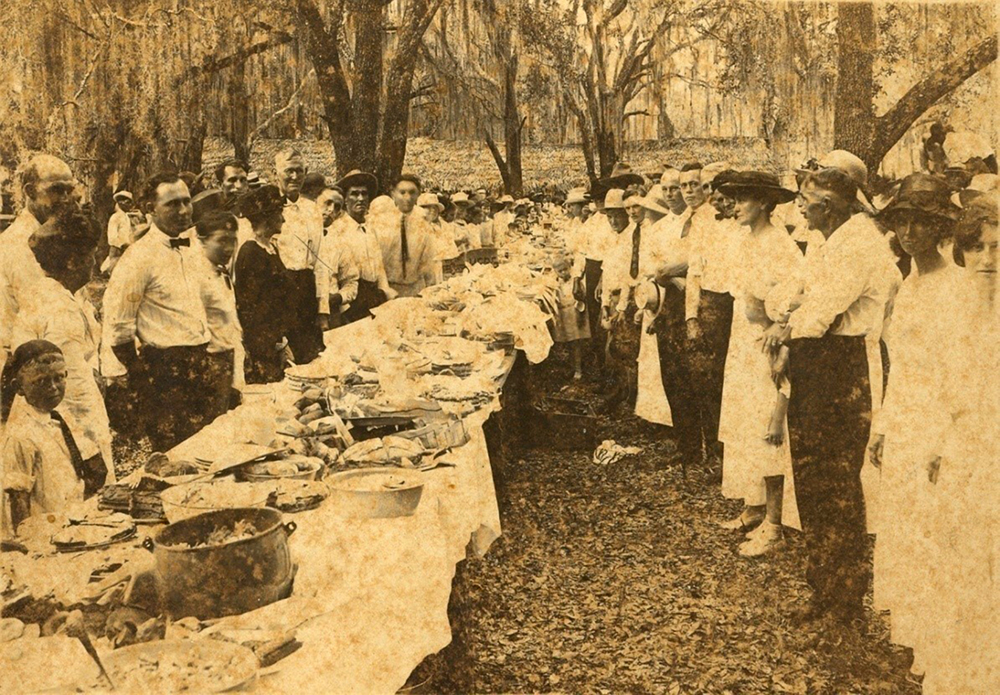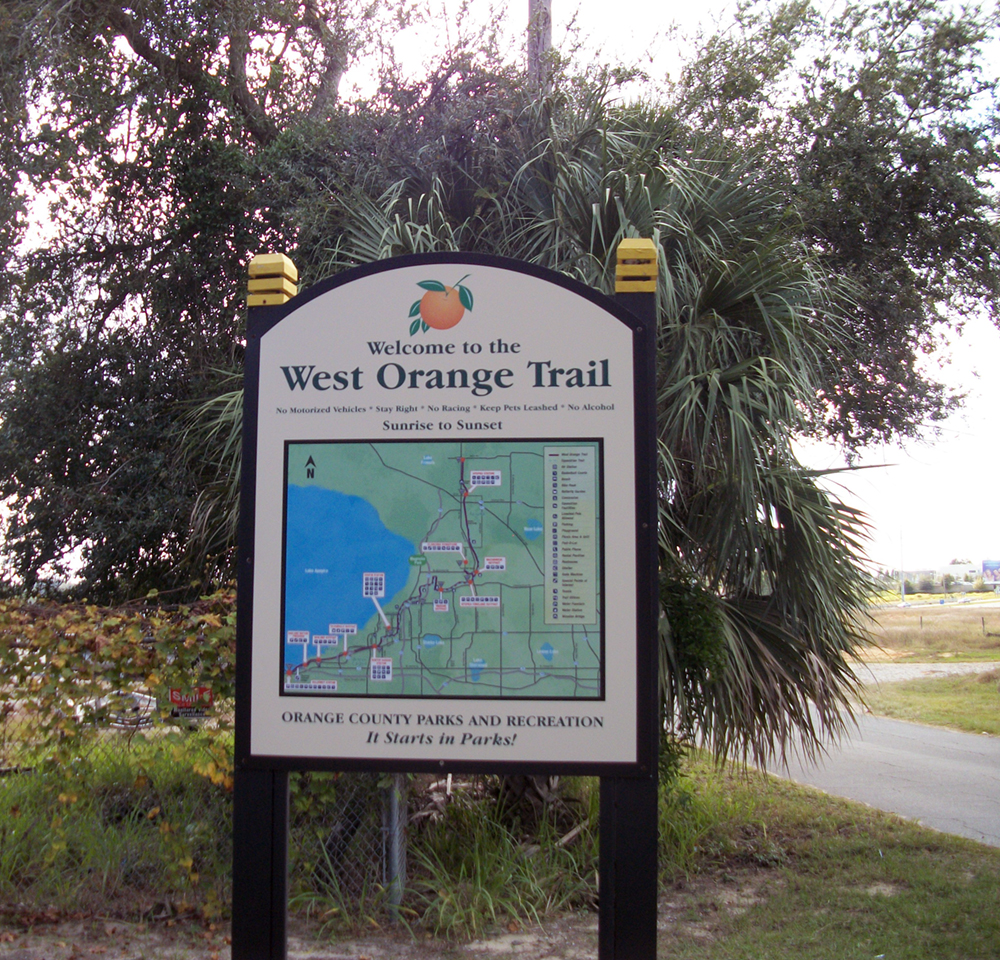By Mandy Kimmer from the Fall 2024 edition of Reflections Magazine
In the century since 1924, what began with a family’s gift of 8 acres has blossomed into 113 parks and trails, boat ramps, recreation centers, and sport facilities that serve 13 million residents and visitors each year.
The 1920 census for Orange County lists 19,890 residents; compare that with today’s booming population of 1.5 million people across 902 square miles! Fortunately, in the 1920s and ’30s, several families had the generosity and foresight to donate tracts of land for the benefit of public use as parks for generations to come.
As Parks and Recreation celebrates its centennial in 2024, here’s a look at the roots of some of our county’s oldest parks and also at one of the department’s biggest achievements, the West Orange Trail.
Warren Park: Cozy on Lake Conway
Each of Orange County’s early parks has a story based in a family’s history, beginning with Warren Park in Belle Isle. In 1924, Wilber and Rose Warren donated 8 acres of land along south Lake Conway, “in consideration of the sum of $10 dollars.” For decades, this compact beachfront park offered a summer hot spot for folks to gather and visit with family and friends.
In 1996, a park renovation added a dock for kayaks and paddleboards, and those sports have replaced swimming in recent years. A rental pavilion, tennis and pickleball courts, picnic tables and grills, and a playground keep Warren Park among local favorites.
Trimble Park: Between two lakes
In the first half of the 20th century, other families followed the trend begun by the Warrens, although the county had no organized park system at the time and the job of caring for parks was assigned to the roads department. The next donors were the Trimble family.
Sadie Conner Trimble was the first postmistress of Lake Jem; her first husband, Owen W. Conner, founded the Ocklawaha Nurseries and owned 600 acres in the area around Tangerine, near Mount Dora. After he died in 1918, Sadie Conner married R.J. Trimble, then treasurer of the Ocklawaha Nurseries, and he took over the business. In 1926, the couple donated 71 acres between lakes Beauclair and Carlton to create Trimble Park.
In the late 1970s, James Lock of New Hampshire purchased 31.5 acres from the Ocklawaha Nurseries. He planned to develop the land into a subdivision called Trimble Park Gardens, mostly in the area where the park campground now sits. In October 1978, through a grant from the State of Florida, Orange County obtained the 31.5 acres and later acquired about another acre from Lock in October 2000.

Dr. Howard A. Kelly at Rock Springs, the focal point of 260 acres he donated to Orange County in 1927.
Kelly Park: A revered doctor’s gift
In 1921, Dr. Howard A. Kelly, one of the four founders of Johns Hopkins University in Baltimore, visited the area around Rock Springs in Apopka.
Born in Camden, New Jersey, Kelly had long been an avid fan of the outdoors, fascinated with nature from childhood. At an early age, he proclaimed to his mother that his career goal was to become a “bugologist.” It’s said she had to stand over him as he emptied worms, bugs, and frogs from his pockets before she allowed him into the house. Maturity helped focus Kelly’s love of science into medicine, and he became a renowned doctor of gynecology and obstetrics.
After his visit, Kelly bought land at Rock Springs to save it from becoming a limestone quarry, and in 1927, he donated 260 acres to Orange County. Decades later, in 2016, his grandson Woollcott Kelly, then 88, attended the dedication of a state historic marker at the park’s entrance. In 2023, he visited the park once again, leading friends on a tour of the grounds.
As time has passed, Kelly Park has become an internationally known destination where thousands of annual visitors still enjoy floating quietly down Rock Springs in an inflatable tube in the chilly 68-degree waters, as they have for decades.
Moss Park: Orange County’s largest
In 1928, Mary and M.J. Moss donated 51 acres situated between lakes Hart and Mary Jane for Moss Park. The site was later dedicated in memory of their daughter, Frances Moss Carroll, who was killed in an automobile accident in Munich, Germany, in 1941.
Camping was introduced to the park in the 1940s and ’50s. In the 1960s, flood control officials dredged the canal that connected Lakes Hart and Mary Jane, technically making Moss Park an island. The canal made it possible to access both lakes from the park, creating the opportunity for increased boating. Later in 1975, Susan and Harry Diamond sold 1,500 acres to Orange County, thus creating the county’s largest park site.

Picnics have long been popular at Orange County parks. Around 1920, a crowd gathered at the picnic grounds in Christmas.
Fort Christmas: History in East Orange
Known by locals as “the picnic grounds” on the east side of Orange County, Fort Christmas Historical Park offers a unique blend of educational and recreational opportunities and has been used as a gathering place since the late 1880s.
County Commissioner Emmett O. Tanner Sr. was instrumental in negotiating with Mike Smith, who deeded 10 acres to the county in June 1930. The park expanded to 25 acres after the county purchased 10 acres from Leonard and Dorothy Chenoweth and 5 acres from Margaret Vickery. During the mid-1930s, a pavilion was built at the park by the federal Works Progress Administration, a New Deal program that provided jobs to unemployed workers during the Great Depression.
To celebrate the nation’s bicentennial in 1976, Orange County constructed a replica fort at the park inspired by the original 1837 Fort Christmas, built during the Seminole Wars. The replica was completed and dedicated in December 1977.

In recent decades, the West Orange Trail became one of Parks and Recreation’s biggest projects. Image from Wikimedia Commons.
The West Orange Trail: Growth and challenge
By 1963, families had donated more than 430 acres to Orange County for parks that were maintained by the roads department. In 1973, the County Commission established the Orange County Parks Department, which became the Parks and Recreation Department in 1985, when it comprised 38 parks. Over the years, one of the department’s most challenging projects has been the West Orange Trail.
In March 1989, planning and development staff from Orange County Parks and Recreation learned about national rails-to-trails programs while investigating another project. Such trails were not a brand-new idea in the area: Lake and Tri-County Rails-to-Trails, private nonprofit organizations, had already proposed a rail-trail that would run from Mascotte in Lake County to Winter Garden in Orange County.
In the spring and summer of 1989, Orange County Parks and Recreation staff met with the Department of Natural Resources and Lake County, and, as a result of this positive meeting, the West Orange corridor was given priority. Commissioner Vera Carter landed the initial $300,000 to pursue the project.
CSX Railroad abandoned its use of the corridor in the 1980s, making the land available for other uses. Private landowners adjacent to the corridor purchased various segments of the right-of-way that made up about one-third of the corridor. Since the 1980s, another third found its way into public ownership, either by Orange County or towns along the trail. CSX had continued to own the remaining third, and the Florida Rails-to-Trails program provided significant funding to acquire it, in a joint acquisition with Orange County.
In March 1990, the vision of the West Orange Trail project was presented to and approved by Orange County Mayor Linda Chapin and the Board of County Commissioners. During the summer of 1990, the municipalities of Apopka, Oakland, Ocoee, and Winter Garden also passed resolutions of support.
On Dec. 30, 1992, Orange County completed its acquisition from CSX Railroad of 4 miles of abandoned right-of-way, and in December 1993, Chapin proposed “West Orange Trail” as the project’s official title, confirming the name already used by local residents and businesses. In September 1994, a grand opening in Oakland kicked off Phase One, which began at the Lake-Orange county line and ended at Park Avenue in Winter Garden, creating the first of Orange County’s trails alongside 53 parks.
In 2002, the name County Line Station, at the trail’s west end, was changed to Killarney Station to be consistent with the use of town names.
In 1995 Gov. Lawton Chiles recognized the West Orange Trail as an “official Florida Greenway in conjunction with the 150 Greenways Recognition Program and Florida’s sesquicentennial.” In 1997, shortly after the Bloom & Grow Garden Society was organized that year, the group started its Path of Life Garden project at what’s now Chapin Station on the trail. Orange County Parks and Recreation donated land for the project, designed to create a serene natural garden at the station and also protect the environment.
Phase Two of the trail, stretching from Winter Garden Station to Apopka and including a connection to Clarcona Horse Park, opened in August 1998. The bridge over U.S. 441 in Apopka was also added.
The trailheads (stations) were usually named after the towns in which they are located; in addition to Winter Garden Station, a second station in Winter Garden became Chapin Station, after the county mayor who championed the trail. The grand opening of Chapin Station took place in May 1999; it functions as the main park office for the West Orange Trail. Phase Three added the Apopka Station with the grand opening in November 2001.
Currently the multipurpose recreational trail is 22.5 miles long, extending from the Lake-Orange county line to Apopka at Welch Road and including the spur into Clarcona Horse Park and a 10-mile equestrian segment.
In October 2022, the Florida Department of Transportation began widening the Florida Turnpike from four to six lanes, requiring the demolition of the longstanding West Orange Trail Bridge.
The new bridge was completed at the department’s expense in 2023. At the completion of Phase Four, the trail will extend to Kelly Park and east of the Orange-Seminole county line to total 28-30 miles.
Now at 100 years since the county’s first, 8-acre park was established, the Orange County Parks and Recreation Division employs a full-time staff of 300 who serve 13 million visitors and program participants annually. The division operates 113 parks, trails, boat ramps, recreation centers, and sport facilities and maintains nearly 15,000 acres of land and 88 sport fields that serve more than 13,000 youth in organized sports each year. It’s been quite a century!

